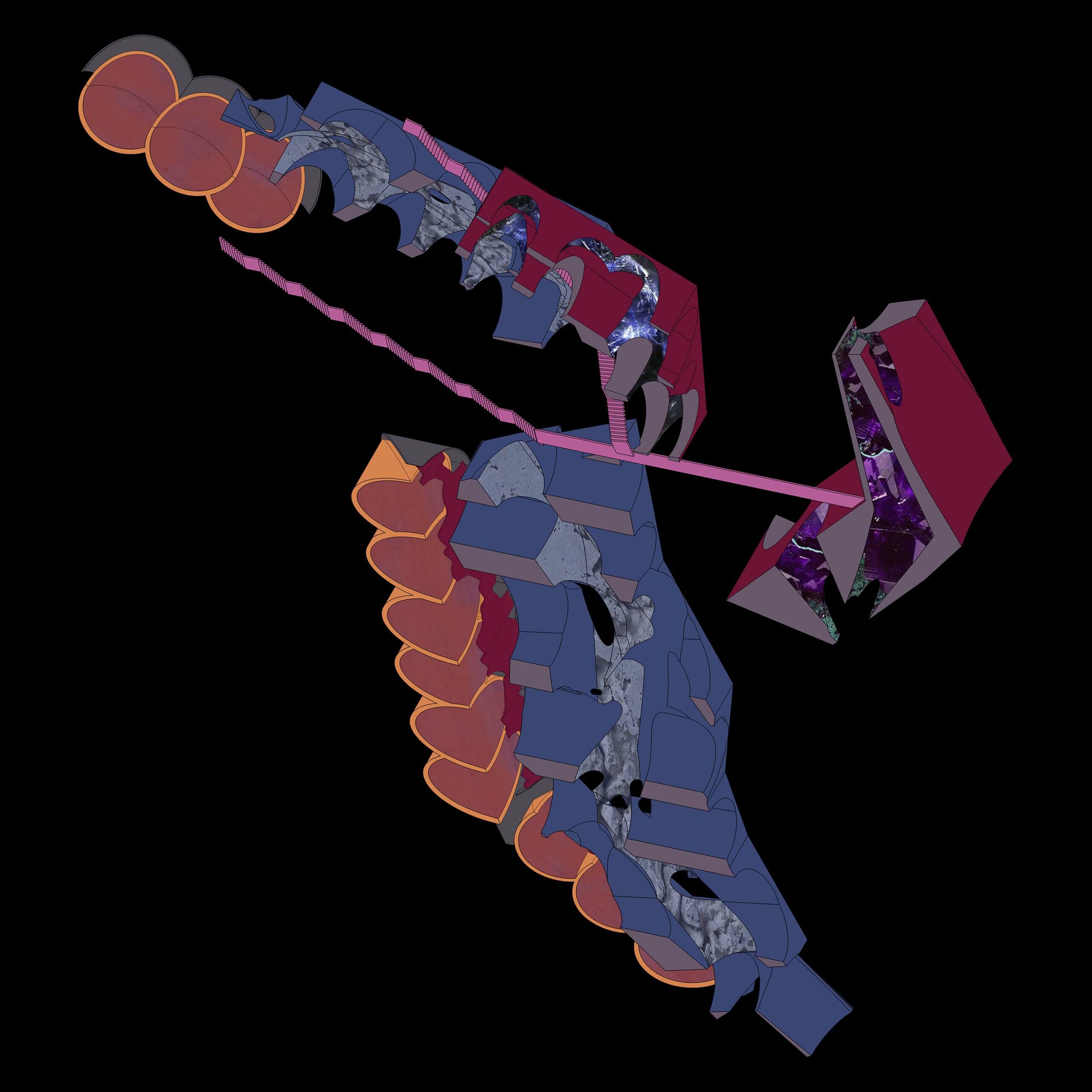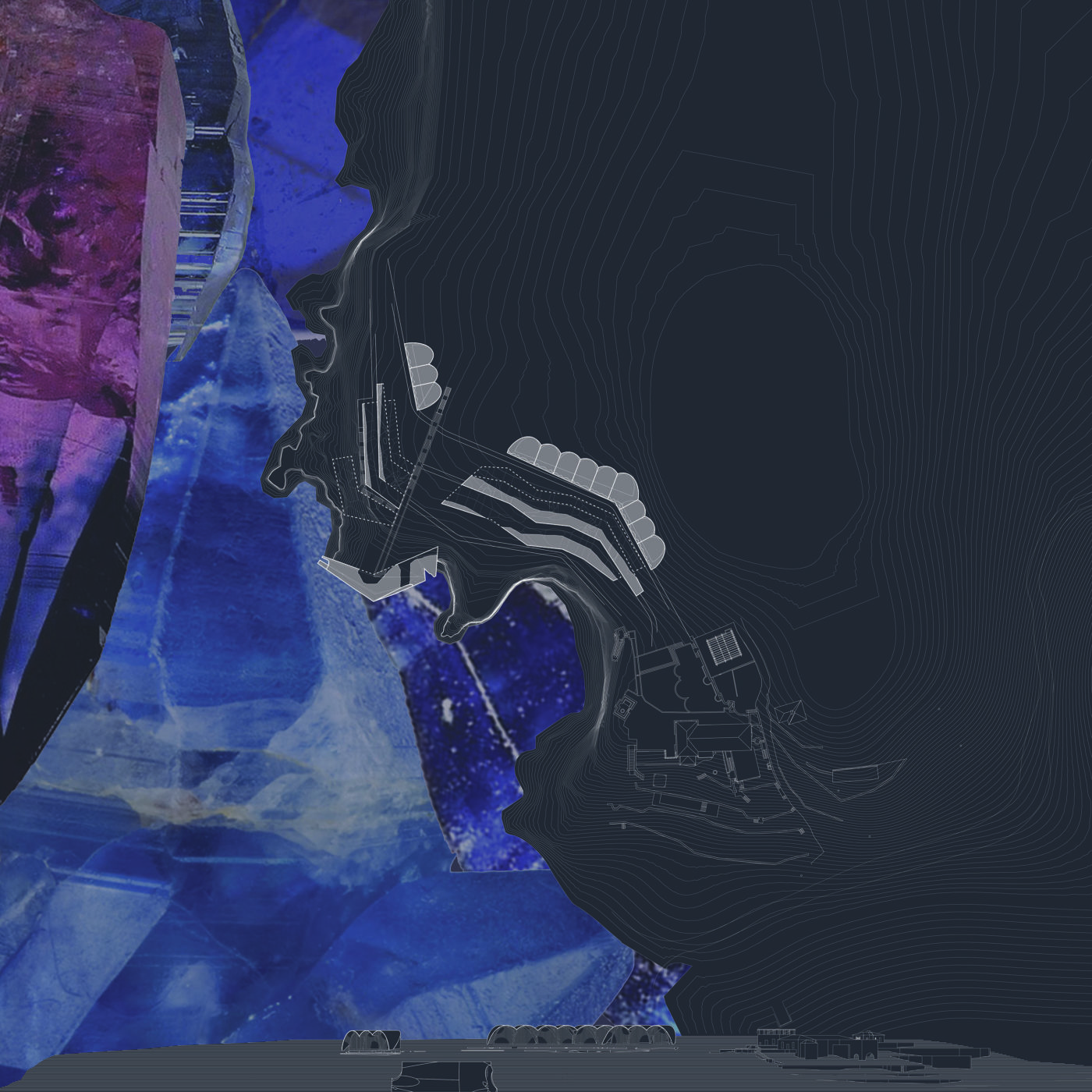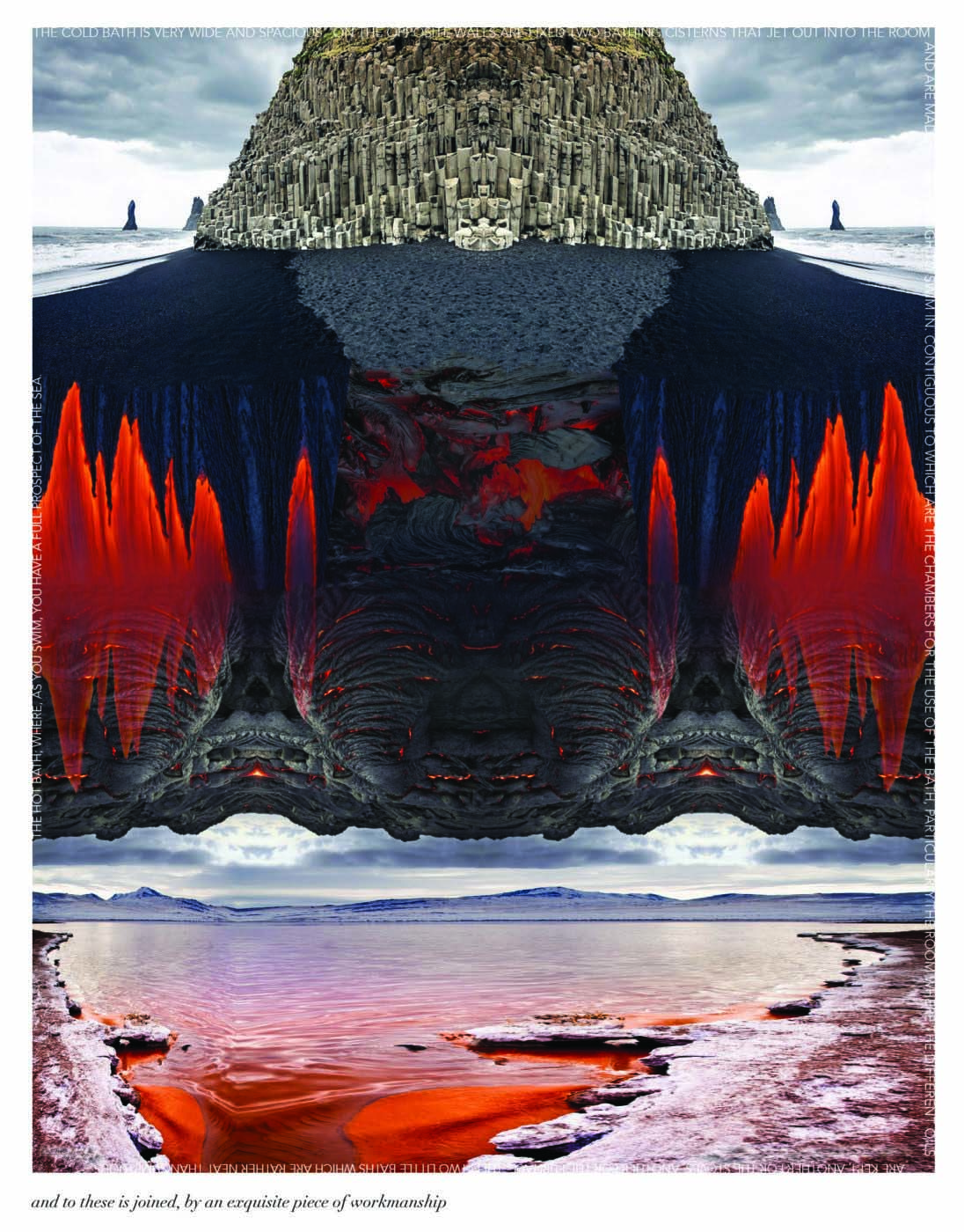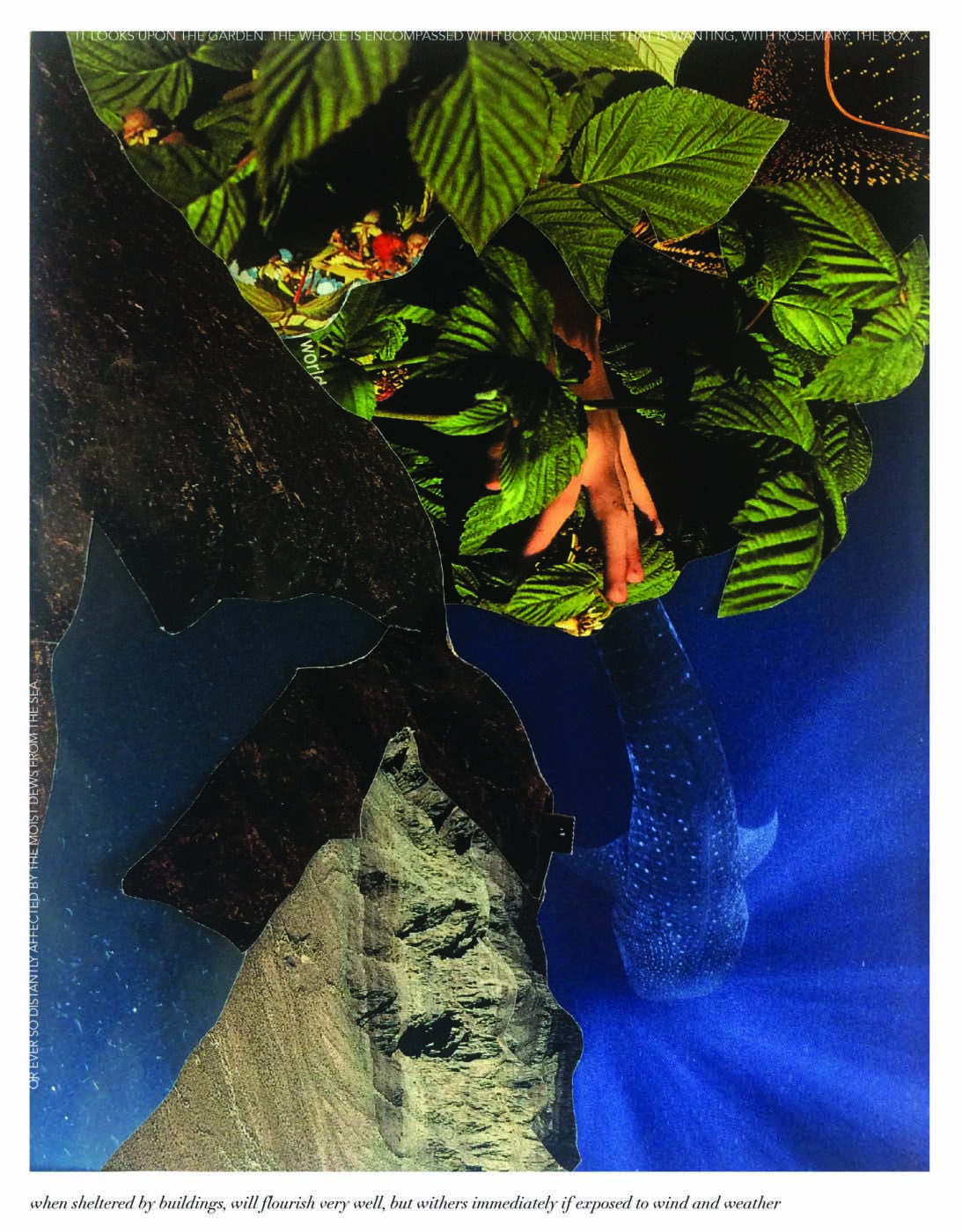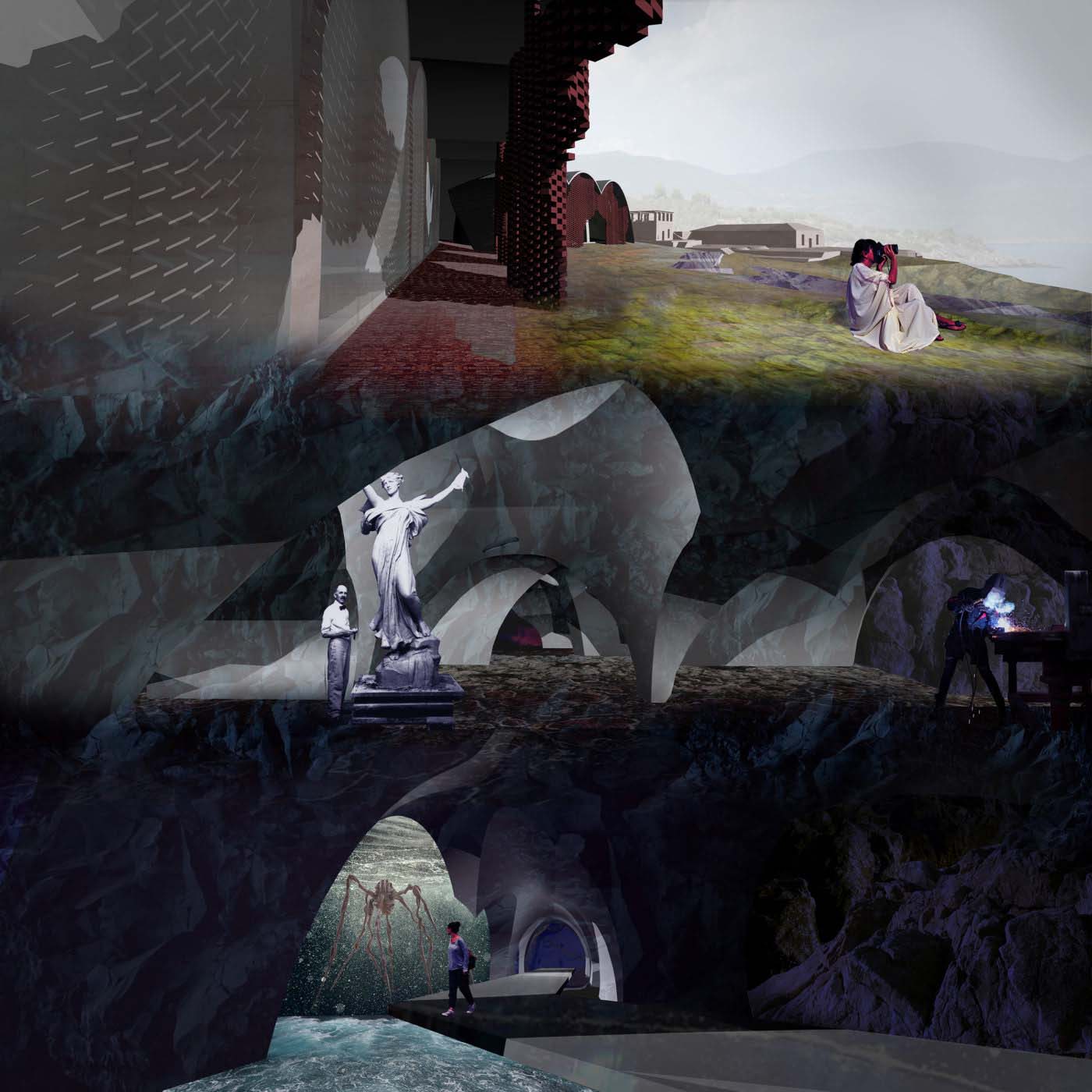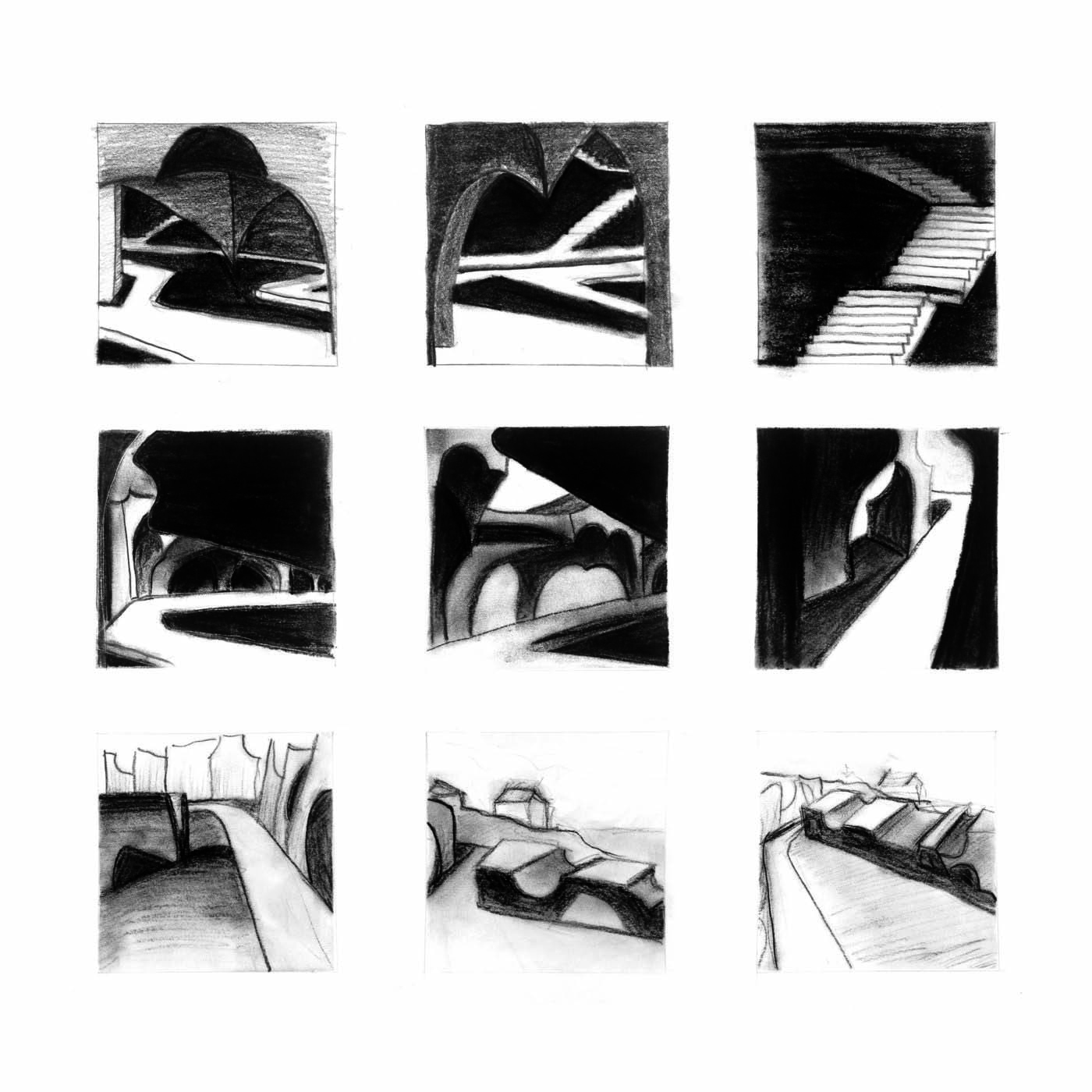2 VotesYear: 2020|Entry Categories: Student Project
Cave of Artifacts
The Fermor Study Center is housed in the former home of author Patrick Leigh Fermor in Mani, Greece. Cave of Artifacts is an extension of the Fermor Study Center providing retreat, research, and creation with an emphasis on situated material artifacts. While Fermor’s house remains the focus for socialization and conviviality, everyday life in the new extension straddles between two spheres, fractured fissures on the surface and eroded stalactites underneath. A tension is set between Patrick Leigh Fermor’s home and garden, evoking a lasting sense of settlement and inhabitation, and the new environment, highlighting the effects of time.
Design Challenge
Patrick Leigh Fermor was a British writer and scholar that settled in Mani, Greece after World War II. His home today serves as a study center for research and scholarship. "Cave of Artifacts" is a proposal to extend the Fermor Study Center campus to an artist residency center with an emphasis on sculpture and exhibition. The three levels of structure and form index purpose on a steep, rocky, and coastal site. The highest level serves inhabitation – the individual respite. Rammed earth walls embrace the homes, mimicking the remainder of site’s idiomatic architecture. A screen of undulating brick provides shade to the west facing residences while, echoing the eroding rocks on the sea shore. The middle level offers work space, resting just below the ground’s surface. Light diffuses from perforations. Sculptors inhabit the cool underground expanse of the studio. The lowest level, that of the sea cave, provides a unique exhibition environment. A controlled excavation caps the edge of the sea cave and makes a mark along the coast. Water delicately streams through sea inlets, allowing exploration of the caves during high or low tide, on foot or by swimming.Physical Context
How does it feel to discover another world through a passage of water, swimming with a sense of lightness while engulfed within the earth’s walls? Patrick Leigh Fermor in his own writing describes his sensation of a “sea cave” as one of swimming "through the heart of a colossal sapphire.” The Greek Mani Peninsula, home to the Fermor Study Center, contains numerous sea caves, terraced landscapes, and rough masonry facades. Three fingers of the campus extend from the house, settling into three different relationships to the lay of the land: atop, amidst, and within. The materials, aesthetic, and heights were carefully considered to blend within the rocky seaside terrain and not inhibit views to the ocean. The architecture echoes Mani’s own vernacular of arches juxtaposed with crumbling stone facades. As one moves closer to the sea, in elevation or plan, the buildings transform into ruins, losing mass and mirroring the effect of erosion. At the deepest point within the constructed sea cave, or the exhibition area, light reflects off the cave interior dappling light surrounding the sculptures.
Share This, Choose Your Platform!

